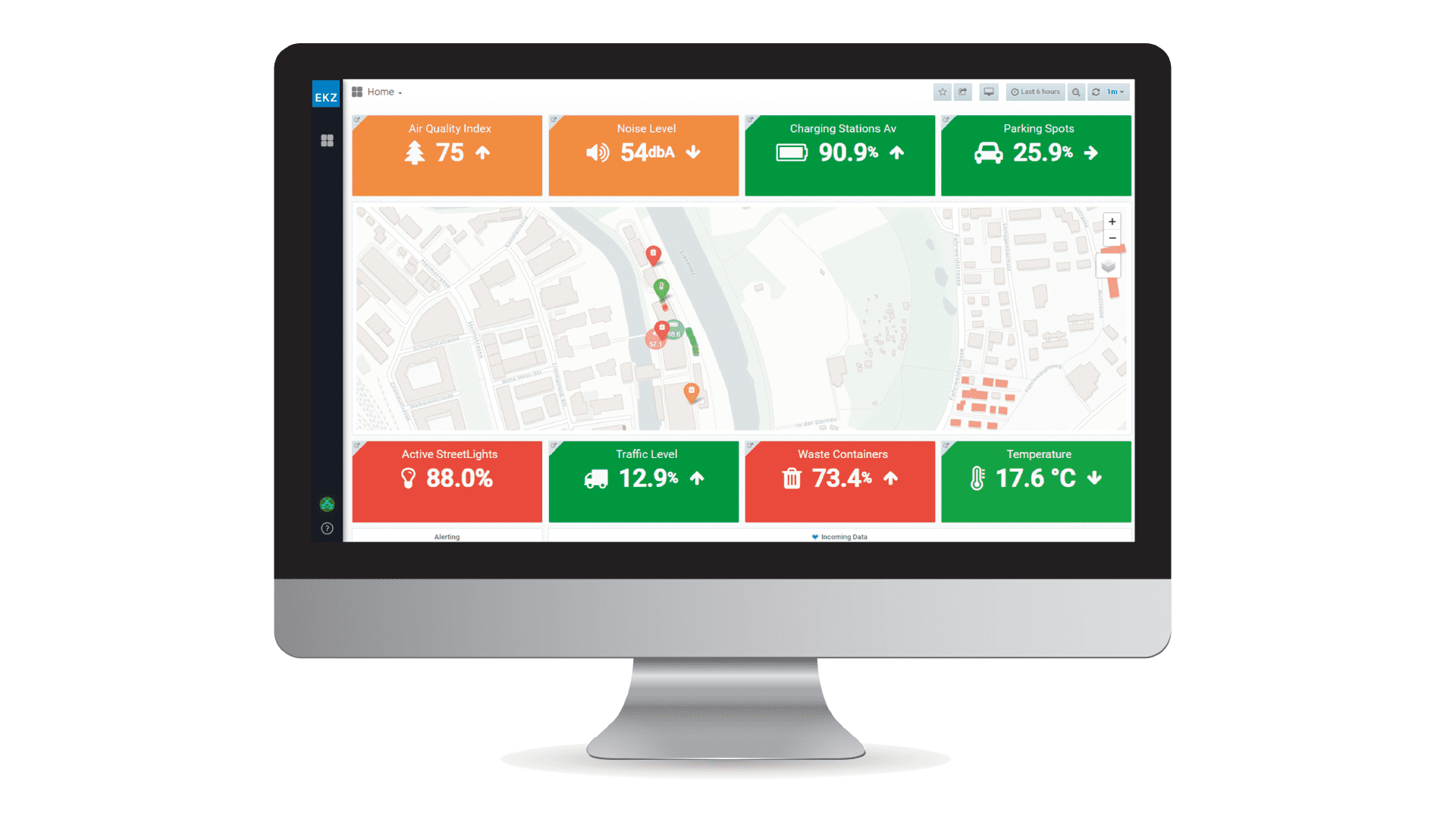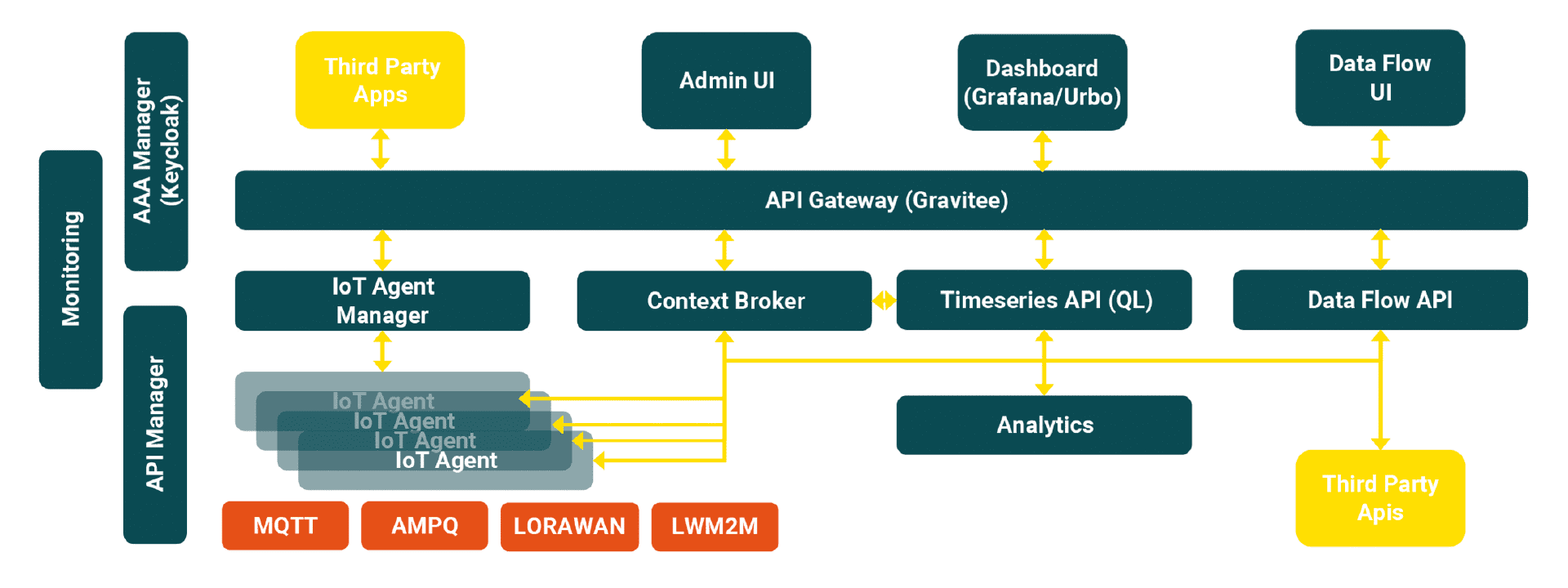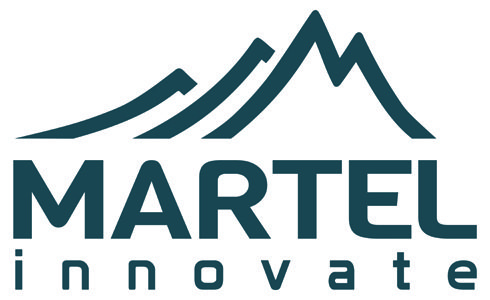Challenge & Context
According to the United Nations (UN) world population report (2018), by 2050, about 70% of world’s population will be living in cities. This leads to challenges such as shortage of space, inadequate and obsolete infrastructure, strained citizen support, environmental sustainability issues to name a few. Rapid urbanization exacerbates negative impacts on the environment and on citizen’s health. Globally, cities are making progress in tackling these challenges by making better use of ICT platforms and solutions. Several obstacles remain when these technological platforms are incompatible and/or lack interoperability. These platforms should not only be free from dependencies but capable of scaling up easily to meet future demands. The importance of working with open source solutions and checking their compatibility with other technologies is paramount. The idea isn’t about optimising a single product but optimising the whole ecosystem and ensuring that technologies have a linking point for others that may come in the future.
Ecosystems, especially in complex socio-technical systems like a Smart City, must be grown and nurtured rather than built. This requires avoiding crisp system boundaries to embrace an open approach, both from a software architecture point of view and from a stakeholder engagement inclusion: city authorities, citizens, city service providers (e.g., urban mobility, waste disposal, or street light maintenance), and general business operators can and should be empowered by the platform to become part of the living city community and contribute to its evolution and prosperity. Moreover, the current climate crisis and the pressing need for circular economy measures, as well as the full life-cycle sustainability requirements have added a whole new dimension to the Smart City future landscape.
Elektrizitätswerke des Kantons Zürich (EKZ) delivers cost-effective, safe, and environmentally responsible energy to one million people in Switzerland; as a trusted and innovative energy provider for many integrated municipalities across Swiss regions, EKZ developed a vision and path forward in full harmony with the principles of openness, inclusion, and sustainability outlined above. Through the Smart City Lab initiative, EKZ has set up a full deployment of multiple sensor types and brands to cover use cases such as traffic management, waste management, and environmental monitoring. The chosen IoT platform to support and deliver the set of smart city services is Orchestra Cities from Martel Innovate. Through the partnership with Martel, EKZ can deliver an integrated solution to its municipalities, combining direct sensor data, information willingly shared by nearby cities and villages, and open data sources. Each municipality can then support their chosen scenarios with different service and load levels.
Solution
The Orchestra Cities IoT and smart city platform is an Open Source, cloud-native, enterprise-strength solution that leverages and extends the FIWARE component baseline by adding, among other things:
- Multi-tenancy, to support groups of cities and towns working together for their common benefit,
- Advanced service orchestration and infrastructure-as-code with Kubernetes runtime and toolchain,
- Data model standardisation, data transformation and augmentation with geographical and time-series information to build real-time historical records.
Orchestra Cities was initially developed as part of the Select4Cities public pre-procurement, and now continues to be managed directly by Martel Innovate within a community-based Open Source development process. The platform was tested with several cities, including Antwerp (Belgium), Helsinki (Finland), Mexico City (Mexico), Wolfsburg (Germany) before the current EKZ adoption in the Canton of Zürich.
The Smart City platform is a working example of leveraging IoT for the sustainable digital transformation of our society and economy. Measuring and achieving a better environment is aligned not only with the UN Sustainable Development Goals, but with other multilateral agreements as well. The driving principles of Orchestra Cities include creating a space where different cities (or villages, or city districts) can come together and share the fractions of their data and services they find convenient. In a cloud-native, multitenant environment, each city can choose which data to keep restricted to their tenancy and which ones to exchange with the other neighbours. Moreover, external data sources can be used and integrated with sensor data to provide insightful combinations to city stakeholders.
The key concept of openness is articulated in three major dimensions:
- Open APIs. All platform features are made available to third parties through suitable gateways, based on open and well documented concepts and data models as the ones from FIWARE.
- Open Data. Orchestra Cities can combine data streams from deployed sensors with third-party data sources. Likewise, time series and other data generated by the platform can be published to integrators and consumers as open data if desired.
- Open Standards. Throughout the software stack, the superior quality and transparency of open standards support high performance levels while not limiting the future option of customers and new third parties joining the platform ecosystem.
The underlying model and methodology for Orchestra Cities product is anchored in OpenSource software and agile software development. Martel leads the development of specific Open Source systems and components within the FIWARE space, while also participating in the evolution and improvement of several others.
Orchestra Cities offers its users a valuable set of integrated feature areas that map the overall platform functionality independently from specific scenarios or use cases. Firstly, there is a layer where concrete IoT sensors of different kinds can be connected to the platform to provide suitable data streams. The platform management tools allow the mapping of sensors and devices individually or in groups, defining common configurations and transforming the sensor-specific data format into the NGSI standard employed by FIWARE components. For a more sophisticated and dynamic integration, Orchestra Cities offers graphical low-code tools that enable administrative users to define data extraction and transformation workflows without any additional software development, for quick and seamless integration of external sensors, systems, and APIs.
Figure 1 . Real-time dashboard
Secondly, for data visualization, Orchestra Cities provides an array of real-time dashboards covering data aggregation, drill-down and navigation with a variety of pre-built views to suit the most common use cases. The transparent geographical and temporal data augmentation results in a great ease of use and definition of complex widgets such as interactive maps, multi-resolution time series, and heat maps.
Last, but definitely not least, the platform and application deployment follows the most modern approaches for cloud-native software orchestration. Multi-tenancy and access management combine into a flexible and secure data sharing environment that can be run on the infrastructure from several major cloud service providers while enabling elastic scalability as well as effective and safe data and cost sharing across tenants.
How it works
From a technical point of view, Orchestra Cities layers for data acquisition, data transformation, data visualisation, and platform management execute in reality as a set of many services, distributed across multiple nodes within a cloud infrastructure with a number of instances that can dynamically change according to the computation load level, following the principles of microservice architecture and elastic resource management for cloud-native software systems.
FIWARE is the most mature Open Source framework available today dealing with requirements for Smart Cities and, more generally, IoT. Orchestra Cities concept takes on FIWARE principles and strives to push them further: this approach determines the chosen software technologies, all belonging to the Open Source software space and classified in three main groups:
- FIWARE components originally developed by Martel, who now lead a community of Open Source developers and users;
- FIWARE components that Martel uses and contributes to as a community member, but is not the original contributor and development leader;
- Open Source components not originating within the FIWARE space, but are considered a battle-tried and globally well-supported solution.
Figure 2 depicts the overall architecture of Orchestra Cities, listing the main logical service components and how they are interconnected.
Figure 2 . Orchestra Cities Architecture Diagram
The Open Source components that have been specifically selected from outside the FIWARE core ecosystems are labelled in the figure and include Keycloak for identity and access management, Gravitee as API gateway for the northbound (i.e., towards applications) interface, and Grafana for interactive dashboards.
The set of services that belong to the FIWARE framework cover two main areas:
- Context Management, handling real-time and historical context, including Context Broker and time series APIs;
- IoT Management, handling IoT devices, and IoT data transport.
The Context Broker API provides a data bus to manage context data. The time series API, based on QuantumLeap (developed by Martel and now officially certified as FIWARE Generic Enabler) stores the historical evolution of the context and enables users to query it via APIs. QuantumLeap stores historical data in a time-series database associating it with a time index and a location.
The IoT management APIs include IoT agents supporting different protocols and transforming received data into contextual data, the IoT agent manager providing a single point of configuration for the different IoT agents, the MQTT/AMQP broker, providing data transport relying on AMQP or MQTT protocols, and the LORAWAN application server, providing integration for LORAWAN devices to connect them with the specific LoRaWAN IoT Agent.
Orchestra Cities experience over the past years yielded insights into the extremely heterogeneous landscape of IoT sensors, providing widely different levels of integration that sometimes are forced to go through the manufacturer’s own platform: this highlighted the importance of flexible and easy to use integration and configuration tools. Another lesson learned concerns the criticality of scalable, fault-tolerant architecture to withstand long-term load levels and data sizes.
Benefits & Impact
Orchestra Cities differs from other platforms by taking the approach of a highly efficient and effective way to deliver on the goals of openness, sustainability, and social impact in order to support multiple cities on a single platform. This approach brings several advantages in terms of costs, scalability and modularity, and it is an important trait of the partnership with EKZ. As a trusted energy provider, EKZ can act as system integrator and solution provider for individual Swiss municipalities as well as whole clusters of them, a positioning that fits the Swiss market well and can bring IoT and Smart City benefits to a much wider and diverse population rather than only urban residents of a few major cities.
Flexible integration capabilities and elastically scalable cloud-native deployment of Orchestra Cities have allowed continuous platform execution for a period of two years, during which, data from more than a hundred different sensors has been collected, stored, and analysed without impacting on the platform execution performance. Deployment on general purpose cloud infrastructure has been modified and optimised multiple times for the best balance among cost, storage, computational response and geographical redundancy of the platform. The gathered results and insights allow EKZ to sharpen their offer to municipalities in terms of available sensor sets, dimensioning and SLA of the cloud-based service provisioning, and overall cost profile and business model shaping.
Considering a wider perspective, the openness-centred value proposition enabled by Orchestra Cities is geared to trigger impact at multiple levels, from cost saving for multi-tenancy, multi-city deployments to stable and monetizable APIs that municipalities can expose to third-party operators. An extremely important megatrend in this context is the synergy of intelligent technology and holistic environmental response: it can be found in the U4SSC initiative from the UN, the Climate-Neutral and Smart Cities EU Mission, and in countless national roadmaps for urban life.
Orchestra Cities can directly collect and monitor key data listed by U4SSC as KPIs for smart sustainable cities under the rubrics of ‘economy’ and ‘environment’. Moreover, through system and open data integration, such collected data can be meaningfully combined with, e.g., traffic and weather information to gain additional insight and set up simulation scenarios, while sensors provide city stakeholders with real-time spatial, economic and environmental information. This helps governments, businesses and citizens plan better economic, social and environmental development — and enjoy a more sustainable city life.
Some key outcomes arising from adoption and commercial establishment of Orchestra Cities are:
- Support migration from vertical data silos to unified data spaces over the city.
- Create a collaborative space where different cities can share data and services, while retaining control of their own data.
- Enable flexible service provisioning, where each city can acquire just the needed services and resource quotas.
- Reduce ownership costs by sharing the platform among different cities.
- Leverage open standards and open source, thus building on the work of a large European and global community.
- Allow citizens and businesses to take part in the city services co-creation process.
Added value through FIWARE
Martel has been a member of FIWARE Foundation from its inception and immediately recognised the multiple ways that FIWARE can be a critical enabler for advanced IoT and Smart City services. A first very important aspect relates to interoperability and standards: Orchestra Cities relies on FIWARE assets that have also been recognized, e.g., as Minimum Interoperability Mechanisms (MIMs) by OASC, the Open & Agile Smart Cities network. A second clear value added is the integrated governance of the several Open Source projects that deliver FIWARE approved software components, thus ensuring reliable and consistent ecosystems for platforms and applications. Last, but not least, the FIWARE brand and outreach activities are precious in creating market awareness that benefits Orchestra Cities, Martel, and EKZ in positioning their offering in comparison with other proprietary solutions and vendors.
From a directly technological point of view, Orchestra Cities adds value to its users thanks to FIWARE data models that are soundly specified but also open and flexible enough to support quick and adaptable integration of multiple diverse sensors and data sources. Moreover, the set of IoT agents supporting many protocols and data formats is a critical building block for the platform. The openness and inclusion benefits that Orchestra Cities brings to cities and citizens are rooted in FIWARE’s own Open Source components, while the interoperability, reliability, elastic scalability, and effective distribution of the IoT platform are enabled by FIWARE core technological choices of a modern, service-based architecture relying on publish/subscribe and REST/JSON messaging. This loosely coupled system architecture is key in enabling cloud-native dynamic deployment but also the choice of alternative implementations beyond the FIWARE baseline (e.g., for the API gateway), and both are key benefits that Orchestra Cities brings to its customers.
Next Steps
The partnership between EKZ and Martel continues to progress, building on the current work and achievements of the past years. The offering is now in the ordinary business development and project acquisition phase, with municipalities engaged at various levels of use case selection, project sizing, concrete planning and business requirements definition. An important direction of work for the Orchestra Cities product concerns the usage of artificial intelligence techniques to analyse, predict and explain time series trends in various urban data streams (air quality, traffic, distribution of parking occupancy, etc.). In particular, a promising domain is the CO2 emission reduction in the context of smarter, integrated mobility; combining causal inference on traffic, air quality, and other time series with a goal-based mobility framework it becomes possible to provide decision support system functionalities both to individual travelling citizens (through suitable integration with route planners) and city mobility operators (through simulation and interventional studies on historical data). The deployment of suitable AI engines and models (whether their approach is causal inference or deep learning) will be harmonised with Orchestra Cities general architecture by leveraging processes and techniques of MLops/AIops to enable automatic detection of model drift and inference inaccuracies to trigger model check, retraining or recalibration, and subsequent dynamic redeployment.



